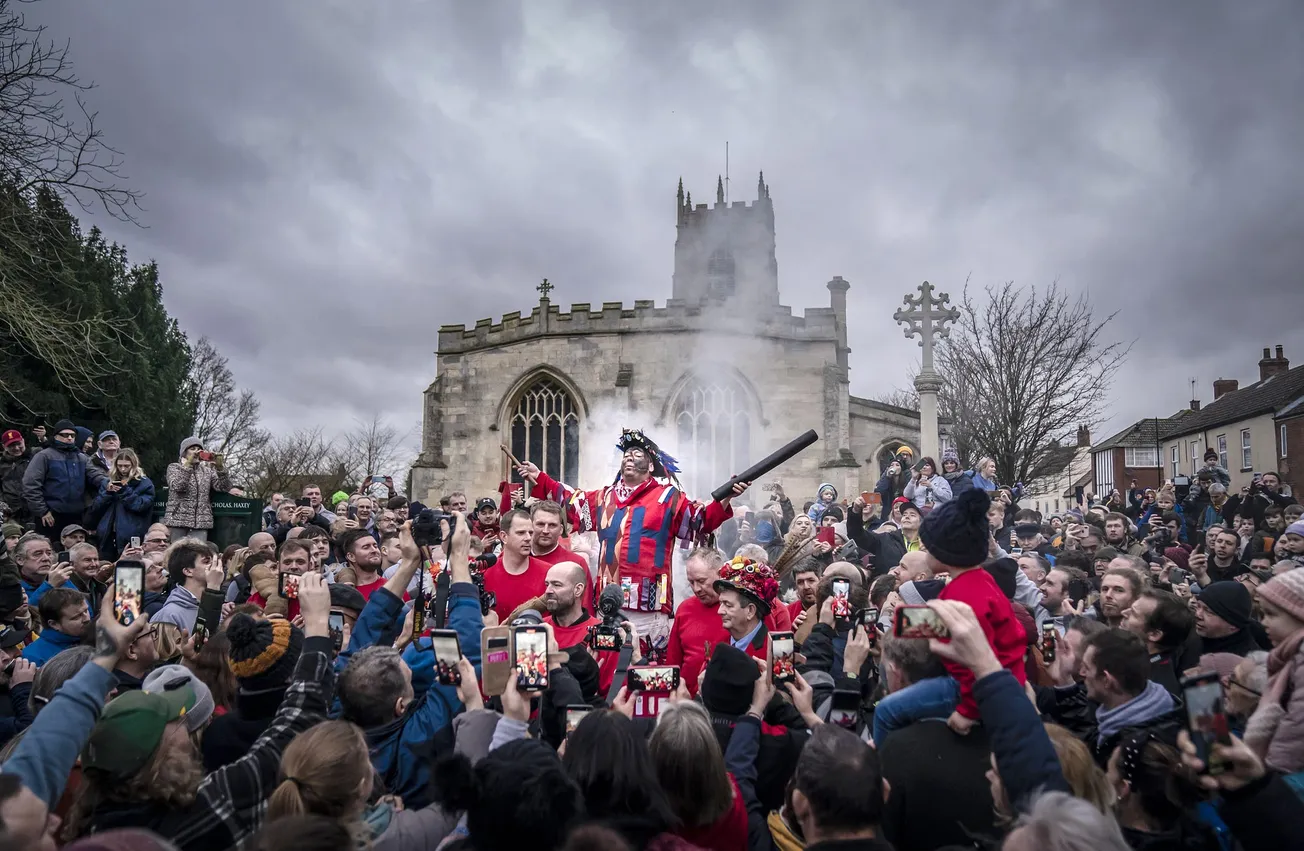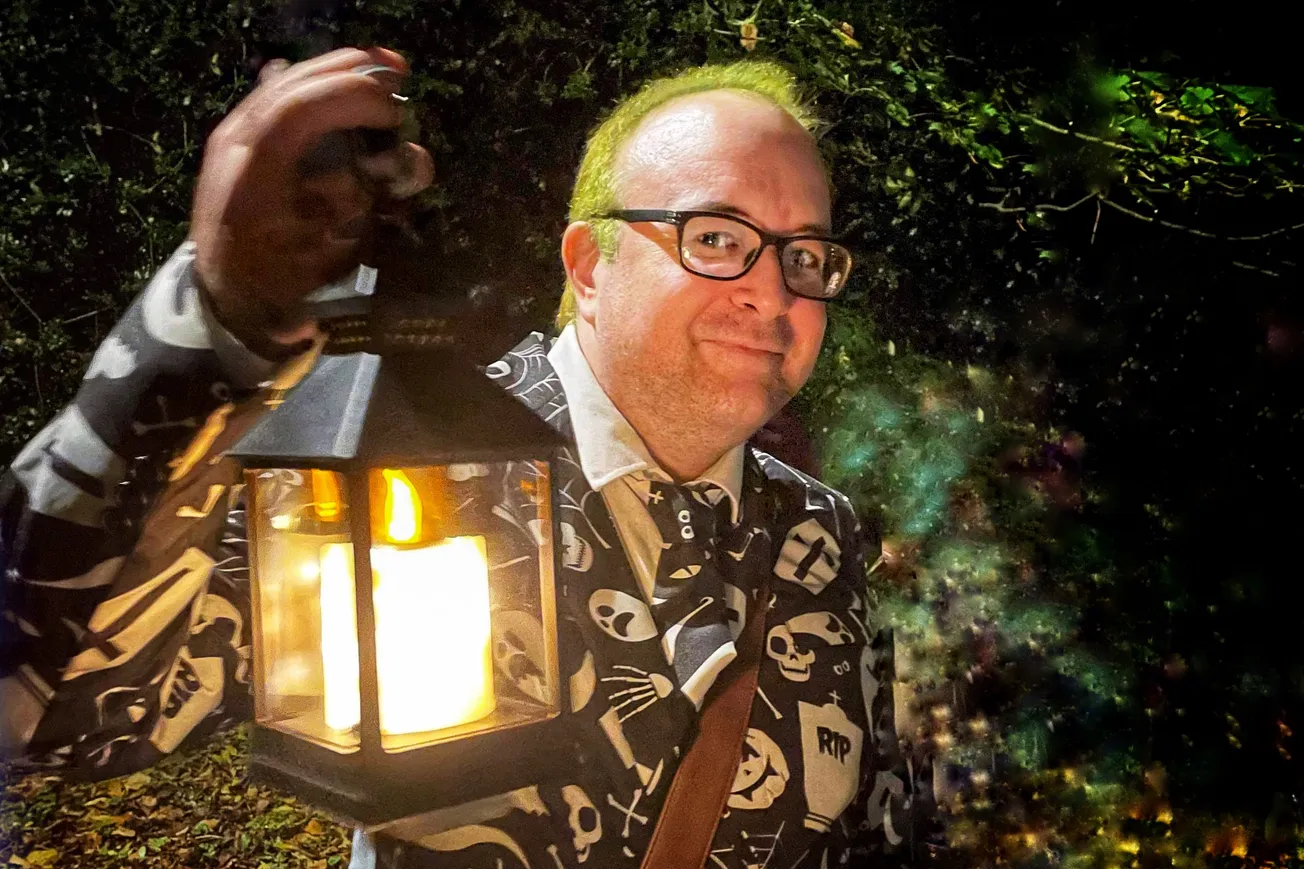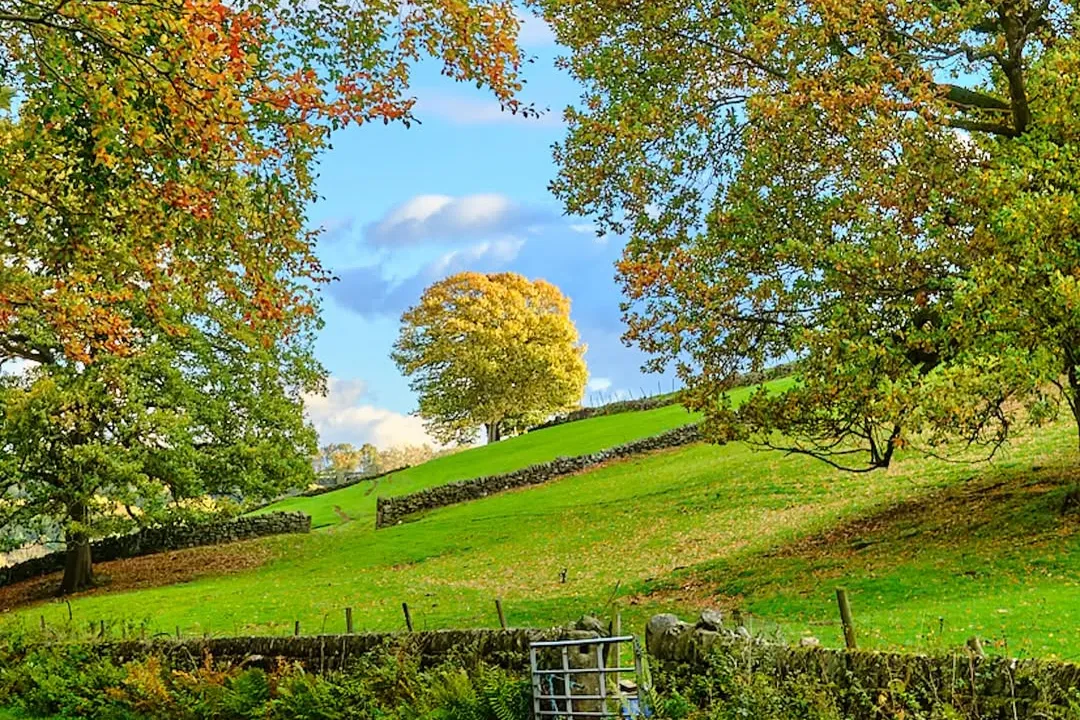“Hoose agen hoose, toon agen toon, if a man meets a man knock 'im doon, but doan't 'ot 'im.”
The famous words hadn’t been heard for three years until yesterday. They mark the beginning of the Haxey Hood, a tradition that stretches back 700 years. For anyone who is scratching their heads about what exactly they might mean, the dialect translates as: “house against house, town against town, if a man meets a man, knock him down, but don’t hurt him.”
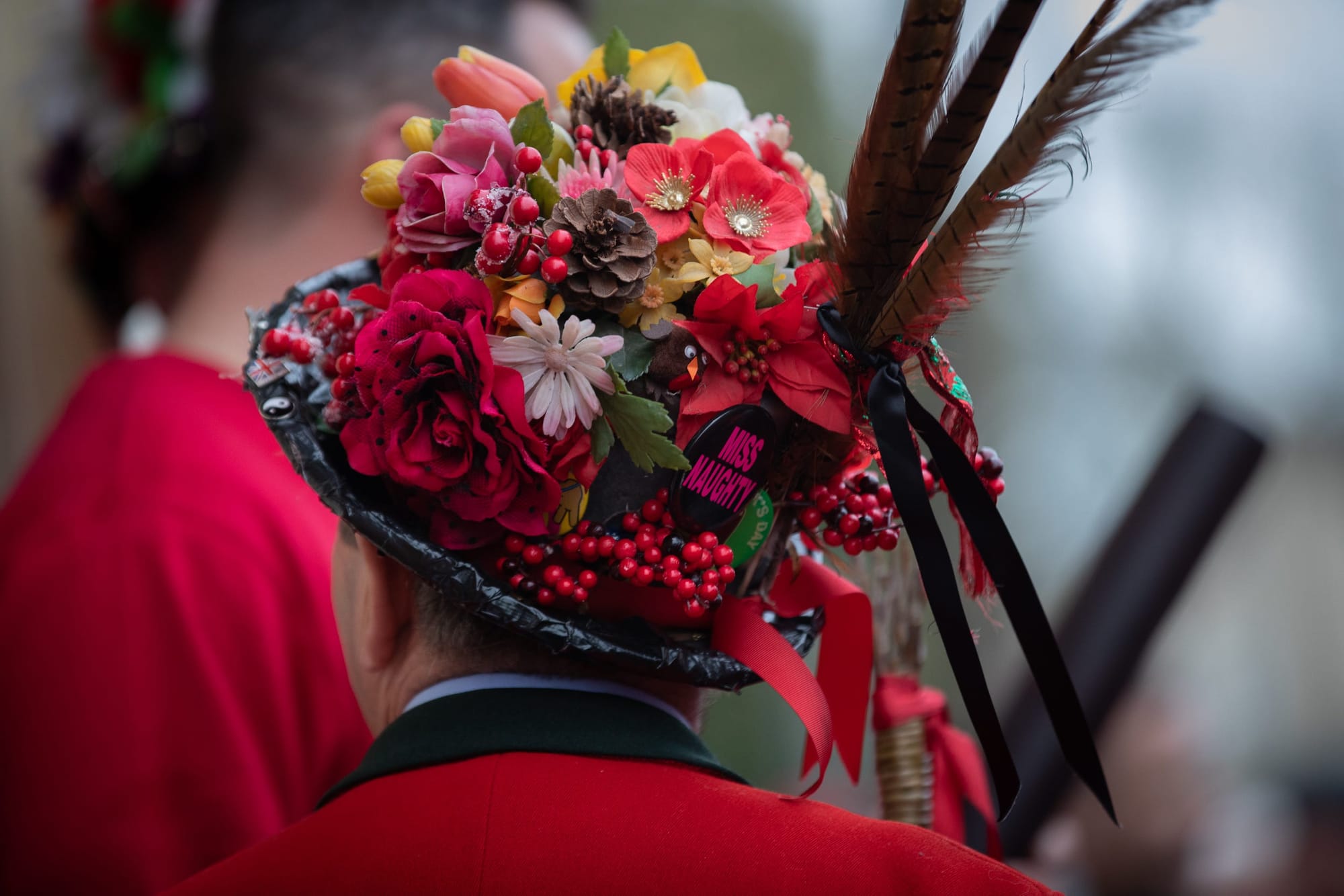
The “hooses” and “toons” mentioned are four pubs in the villages of Haxey and Westwoodside in the Isle of Axholme, a high point once surrounded by marshy bogs just a few miles east of Doncaster. Three of the four pubs (the Duke William, The Loco and the Kings Arms) are in Haxey itself. The other (The Carpenters Arms) is in nearby Westwoodside. The game used to be played by three pubs until the Duke William joined in more recently — around the year 1730.
For centuries the villages have enacted the Hood tradition, a mob game which vaguely resembles rugby but with far fewer rules. Starting at around 3pm on the twelfth day of Christmas, up to 300 people join a vast scrum (called “the sway”) around a leather tube (known as “the hood”). The aim: to push the hood to one of the pubs competing. The prize: to keep the hood in your pub for the next 12 months. The reason: no one can remember.
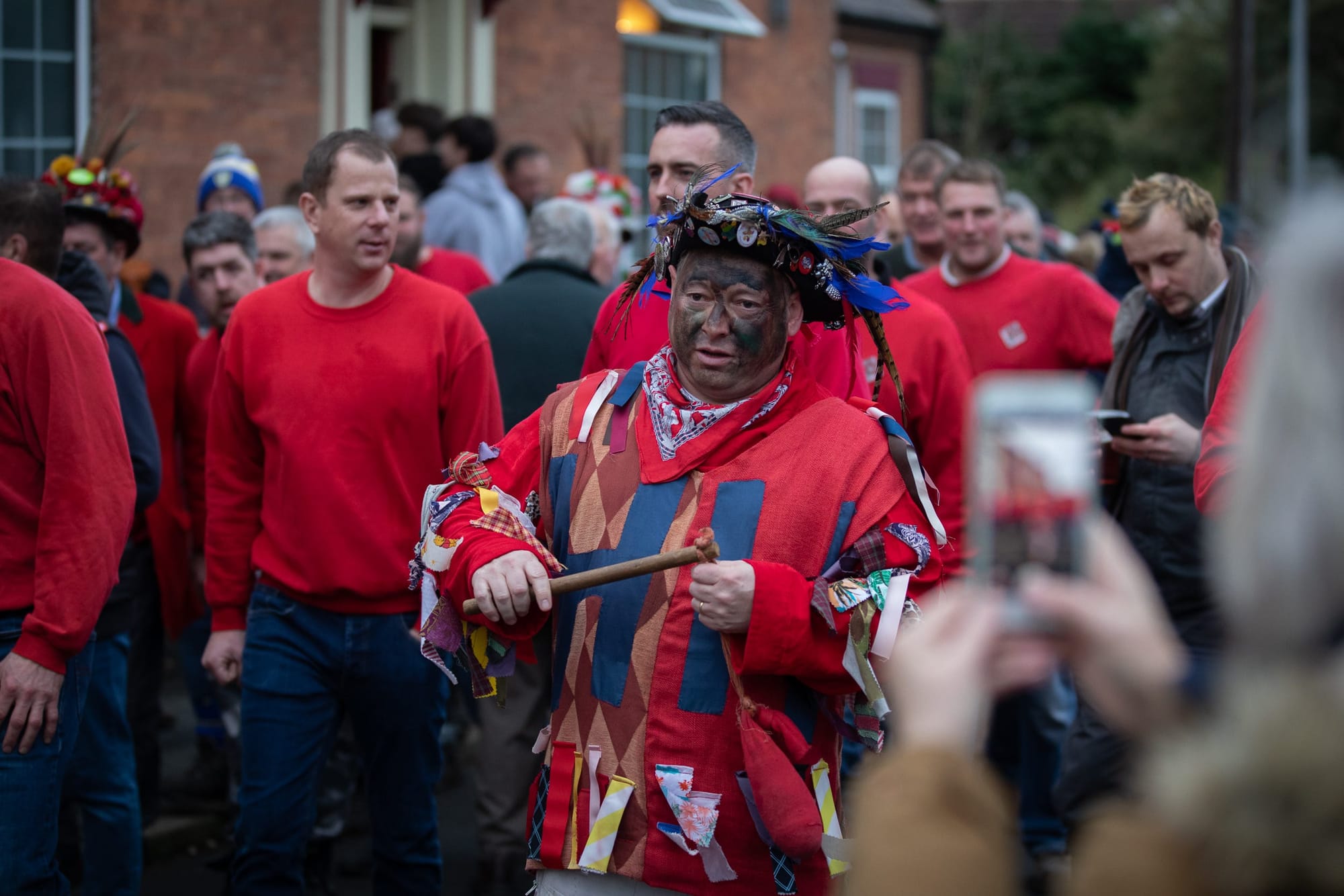
Or maybe they can. The folklore story now told and widely accepted as fact is that the game began when in the 14th century, Lady de Mowbray — a local noblewoman — lost her silk riding hood on her way through the parish. As the villagers ran around trying to catch it, the noble lady found the sight so amusing she promised to give the parish 13 acres of her husband’s land on the proviso they would reenact the comical scene every year.
There’s more. The story further goes that the peasant who finally caught the hood was too shy to give it back to her, giving it to another villager instead to hand back to the high-born woman. These two characters are represented in today’s Haxey Hood by the shy Fool and his braver friend the Lord, while 11 “Boggins” (the rest of the villagers who tried to catch the hood), keep the peace as the sway makes its way around the villages.

Whether the story has any truth to it or not no one really knows — to me it has the ring of something that was made up long after everyone had forgotten why they did it in the first place. But there is a record of land being given to the parish by John de Mowbray at around the time the Haxey Hood is meant to have begun (1359 or 664 years ago), so who knows.
Others have suggested another, more sinister explanation: a link with sacrificial bog burials. Many archaeologists believe several naturally preserved mummies which have been found in the peat bogs which surround the Isle of Axholme were in fact ritual sacrifices (for some, that the game takes place in midwinter, a traditional time for sacrifices, adds credence to this theory). Also, the Chief Boggin (the lead official) carries sticks which resemble the sticks sometimes found with bog mummies. And, perhaps most intriguingly of all, several bog mummies in Europe have even been found with leather hoods tied to their heads.
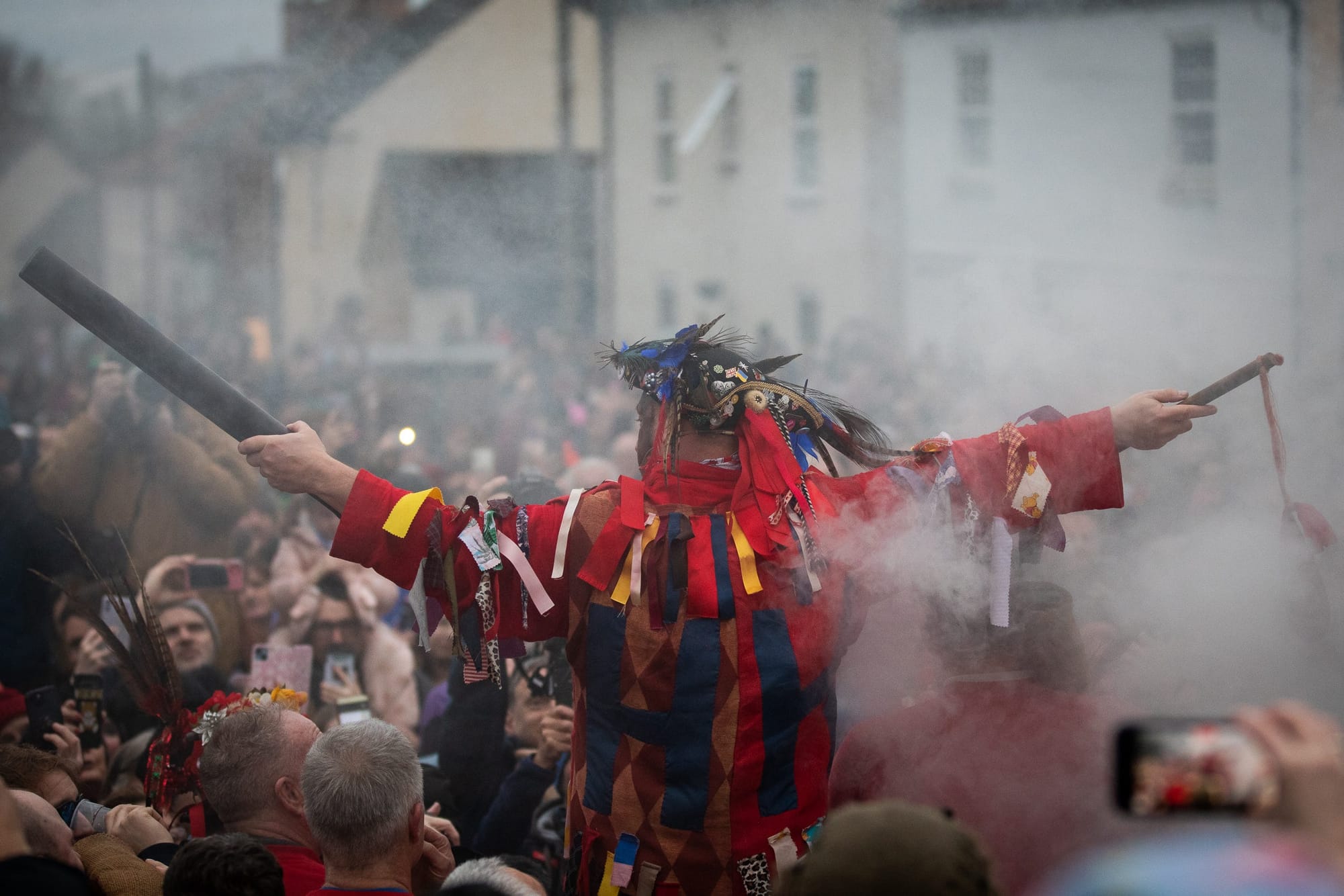
Over the years many other strange traditions have been added to the Haxey Hood. After the Fool leads the procession to St Nicholas’ Church in Haxey — during which he is permitted to kiss any woman who takes his fancy — a fire is lit behind him in a ceremony known as “Smoking the Fool” (in the less health-and-safety-conscious past he was actually suspended over the fire and swung back and forth before being dropped in it and expected to escape). Following the famous chant, everyone makes their way to an open field between Haxey and Westwoodside where the game begins.
As photographer Andy Brown and I make our way into Haxey on Friday afternoon, an official looking man in a high-vis jacket catches my eye. “Can we park here?” I ask. “You can,” he shouts back. “But your car might be on its side by the time you come back.”
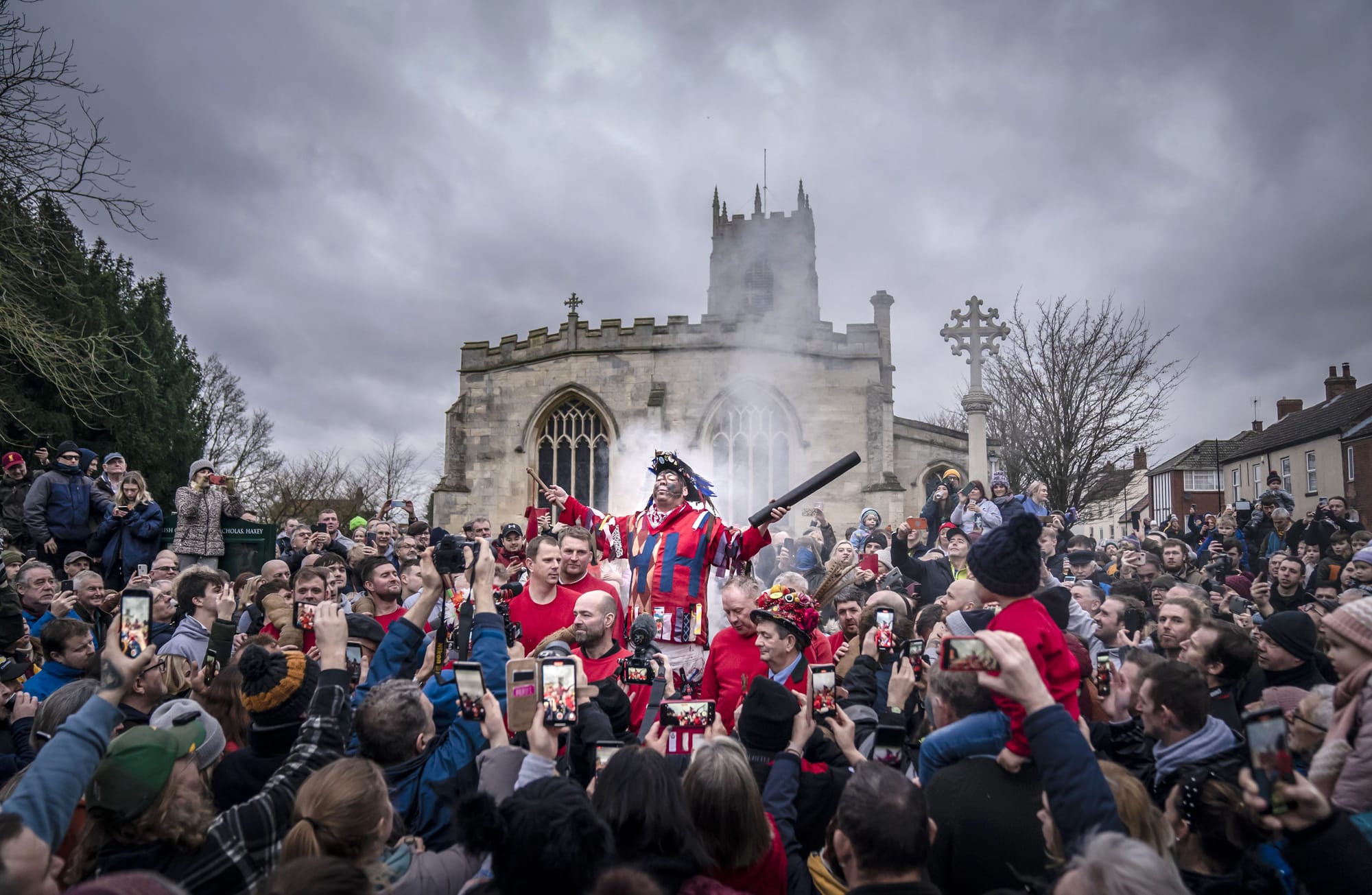
He’s referring to the possibility the sway may come past this way and damage my suddenly fragile looking Skoda Citigo — but we’re late, so I decide to take the chance. As we walk into the village there are already hundreds of people waiting by the roadside. Dozens of photographers cram themselves around the church while television and radio reporters grab anyone they can find for interviews. High above us a whirring drone captures the whole astonishing scene.
“It’s uniquely eccentric and English,” one man in the throng of people waiting for the procession tells me. He’s witnessed the Hood many times before but this will be the first he’s seen as a villager since he moved here from Doncaster two years ago (the Haxey Hoods of 2021 and 2022 were cancelled due to Covid). The assembled masses are waiting for the officials to make their way out of the last pub on their itinerary — the Duke William on Church Street — before making their way up to the church. “A lot of it is beer-driven,” the man confides. “There’s a lot of alcohol involved.”
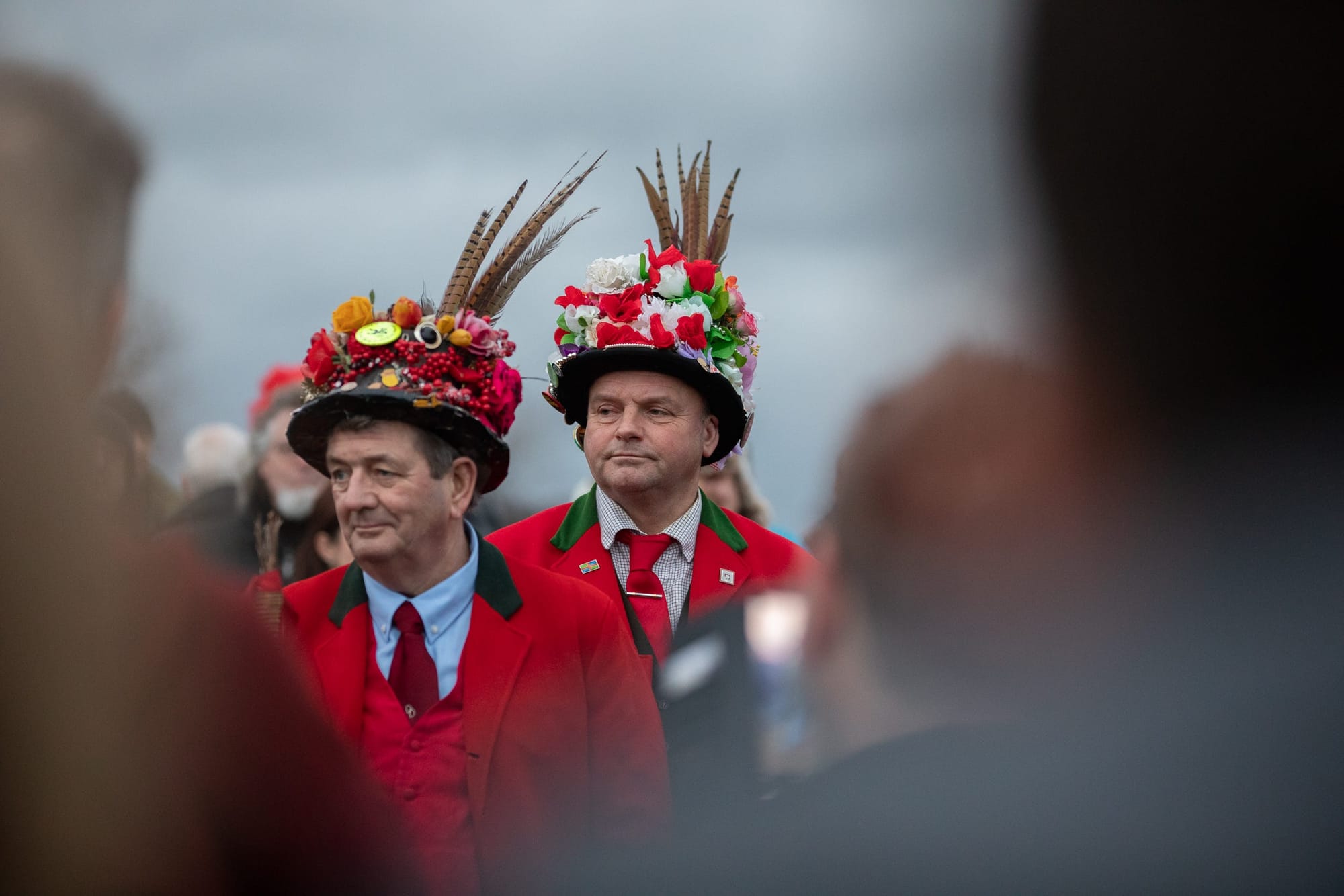
A middle-aged woman who has lived in Haxey all her life tells me her father used to take part in the Hood when she was younger. What was it like back then? “It’s always been very popular,” she says. “But the sway isn’t the same as what it was.” It turns out she means that over the years it’s become a slightly sanitised version of the visceral life and death combat she saw her father play when she was a girl. “It’s health and safety gone mad,” I say, as a joke. It turns out she’s deadly serious.
Eventually, the Lord, the Fool and the 11 Boggins have had enough of the Duke William’s hospitality and make their way to the Mowbray Stone, where the crowd finally gets what they’ve been waiting three years for. As a smoke billows from behind him, the Fool leads them in the chant.
“Hoose agen hoose, toon agen toon, if a man meets a man knock 'im doon, but doan't 'ot 'im.”
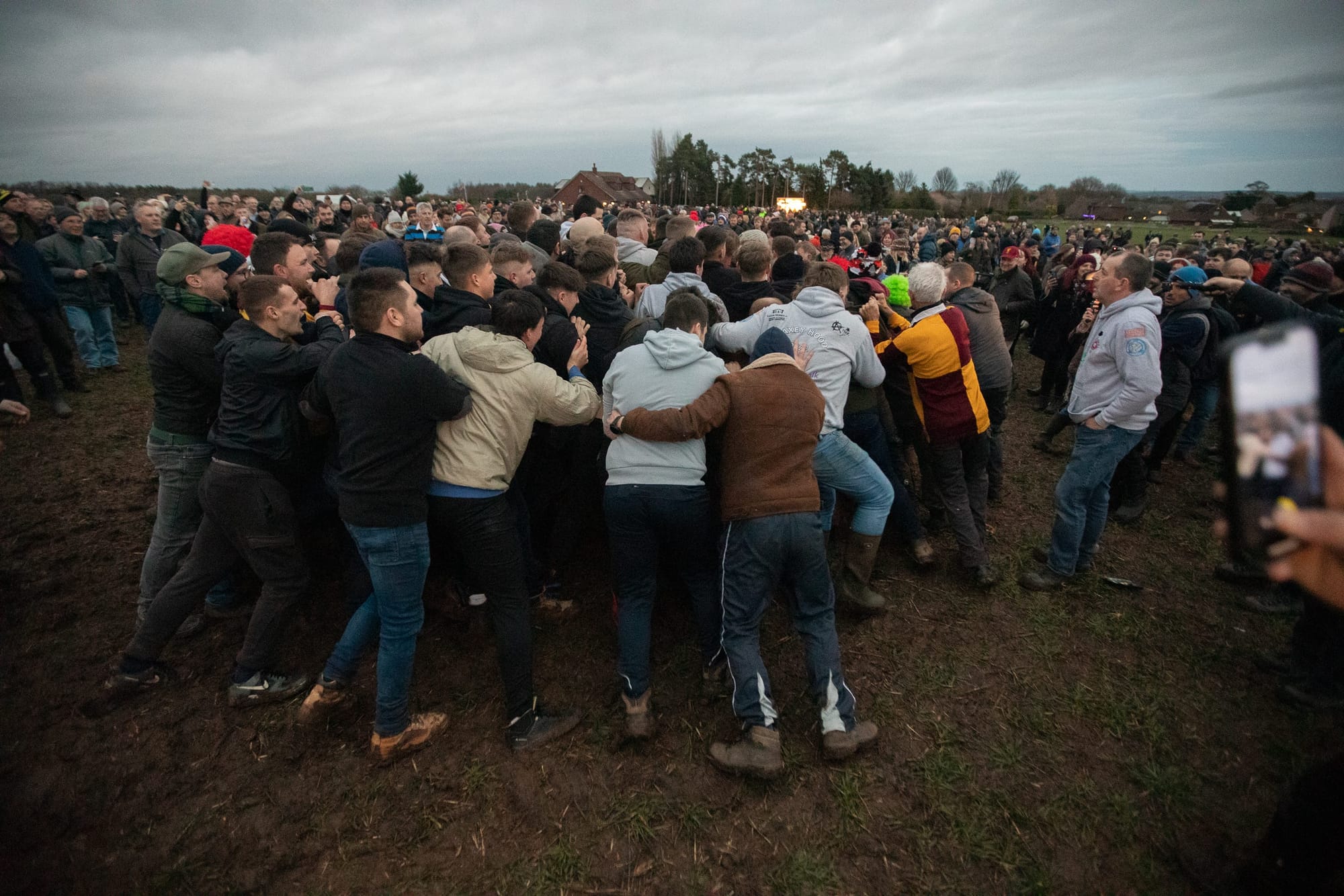
It’s only a short walk to the field where the Hood will take place, but it has the feel of a medieval pilgrimage. Hundreds of people, old and young, outsiders and locals, all walk together to the highest point of the parish — equidistant between Haxey and Westwoodside — where the ancient game will take place.
Preparing himself for battle is 36-year-old Stuart Meanwell, who this year is taking part in his fifteenth Hood. Originally from Doncaster, Stuart tells me he never even knew about the tradition before being introduced to it by his wife, who is from the village of Haxey herself. Dressed in a rugby kit (complete with a scrum cap to keep his ears safe), he says that the most dangerous part is when the sway is still on the field, as people can get crushed as it falls. Still, he doesn’t seem too worried — likely due to the substantial amount of ale he’s very clearly drunk. “It’s just great fun,” he tells me with a smile. “Better than Christmas.”
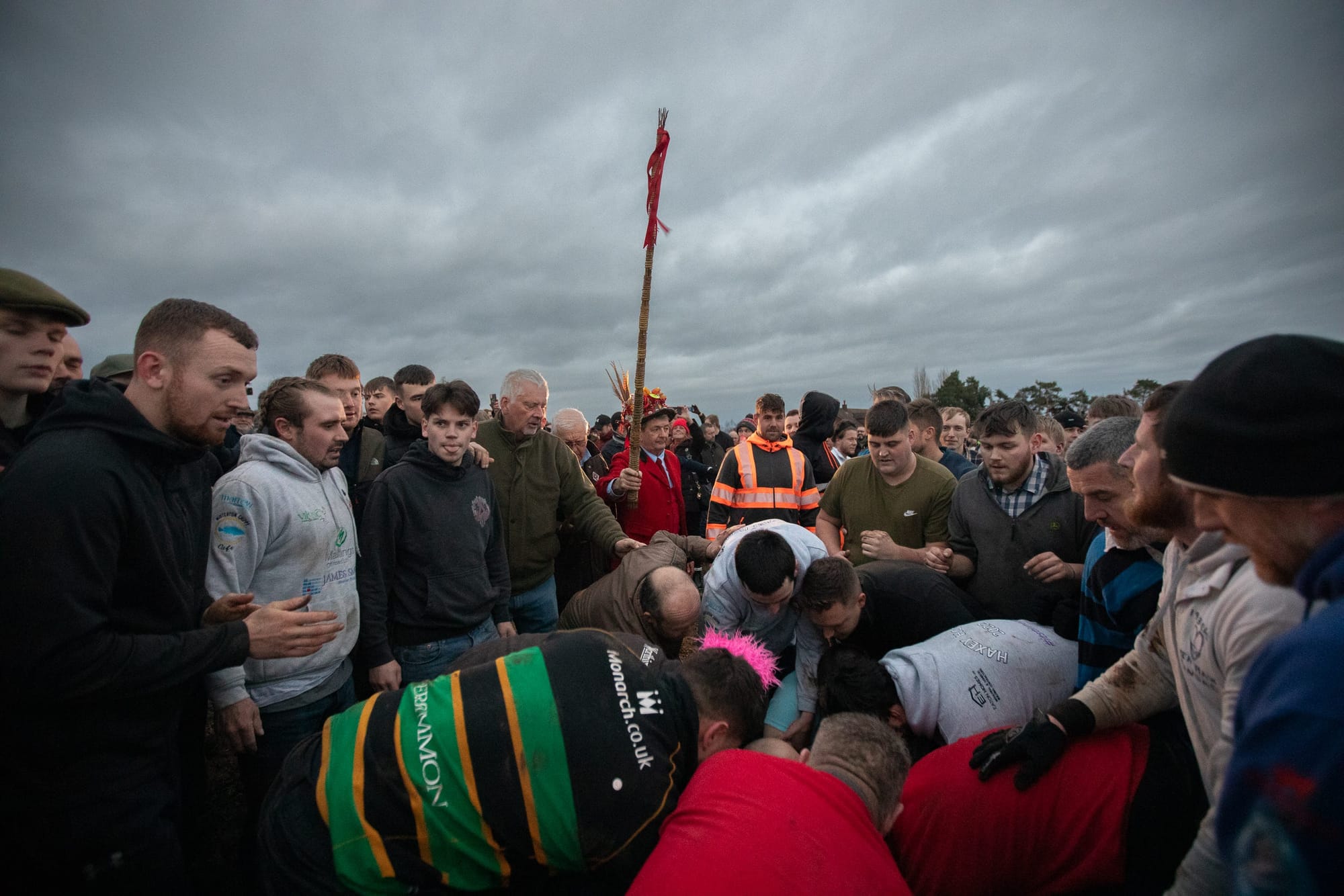
One of the things you don’t realise until you see it up close is how dangerous the sway is. A huge mass of bodies surround the Hood, all trying to push it in one direction or another. Every 30 seconds or so the whole thing collapses, leading to urgent cries of stop from the officials. During one of these breaks a young man is dragged out of the sway by the scruff of his neck and given a strict telling off for not obeying the rules.
Every time the sway goes down people emerge looking dazed and shaken, only to dust themselves down and head straight back in. Then, almost out of nowhere, ITV reporter Adam Fowler appears right next to me, his face bathed in the powerful light of a professional television camera. Crouching down with his crew perilously near the sway, the way he talks about the game makes it sound like he’s reporting from a war zone.

As the light fades, Andy and I decide it’s time to head home and leave the villages of Haxey and Westwoodside to their centuries old struggle. Safely back in Sheffield, I find out from the Doncaster Free Press that the Loco won the Hood for the first time since 2015, a victory which saw them “break the stranglehold the Carpenters and the Kings Arms have enjoyed over the Hood over the last decade”.
Whether it’s about who wins I’m not too sure. After witnessing it at first hand, the Haxey Hood seems to me to be a tradition which brings people together rather than separates them: something from the past that people from the present pass onto the future. It was a privilege to see it return.
Comments
How to comment:
If you are already a member,
click here to sign in
and leave a comment.
If you aren't a member,
sign up here
to be able to leave a comment.
To add your photo, click here to create a profile on Gravatar.


